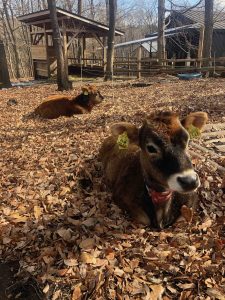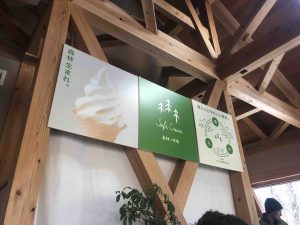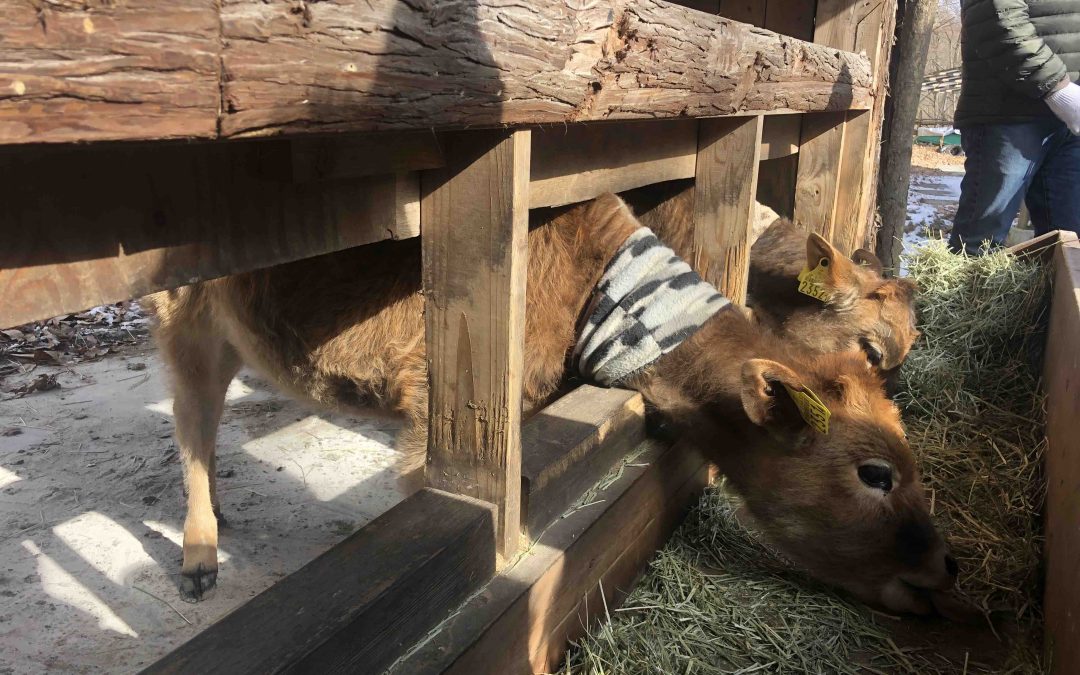I was so excited to visit the Shinrin no Bokujo dairy farm, and I loved the time we were able to spend there! We were treated to a talk from the proprietor, Yamakawa-san, a tour of the property, a delicious spaghetti lunch, and plenty of opportunities to pet cows. The farm buildings are beautiful, and I was especially awed by the stunning wood block floor in the café and shop space. Yamakawa-san talked to us about his integrated business model and the ways in which he has worked to create this sustainable model of dairy farming, and we were even given samples of the milk. It was delicious, of course, and it costs six times more than average milk in Japan costs. Yamakawa-san explained to us that beyond selling just a product, he aims to sell a vision of dairy farming that can be expanded to future operations. He explained that people are more than willing to pay this price because they want to support his vision for the future of sustainable dairy farming. This concept evidently works well for Shinrin no Bokujo, and they have even achieved enough notoriety to sell their milk to renowned restaurants all around the world.

Happy cows = good milk
The price of the milk is somewhat justifiable for a few reasons. First, due to the small size of the dairy, there simply isn’t as much product as in a commercial dairy setting. Second, Yamakawa-san explained that because the cows are given free range of most of the property, they expend more energy on moving around and a little less energy goes to the milk making process than it would in a commercial setting in which cows don’t move around much.
However, I think it is worth thinking about the way that Shinrin no Bokujo is set up for a particular socio-economic class – at six times the average price of milk in Japan, it is clearly not accessible to everyone. In this circumstance, it is fair to say that supporting this sustainable business requires a certain amount of privilege. Yamakawa-san even acknowledged this himself when he said that “people who wear Patagonia buy this milk,” recognizing the relative economic privilege someone must have to be able to afford this lifestyle. Yamakawa-san is well aware of his consumer base and has worked to cultivate his brand to specifically appeal to that market; he isn’t trying to sell to the average Japanese consumer.

A glimpse inside the farm shop & cafe
In contrast to this concept, ARI aims to strip privilege in order to foster a sustainable living interaction with agriculture and the environment. This is a completely different method, and yet achieves a similar goal of practicing sustainability. I’m definitely not trying to say that one of these options of sustainable living is better than the other – they both have valid approaches, and it is simply interesting to explore the different ways in which sustainable living is realized.

Recent Comments